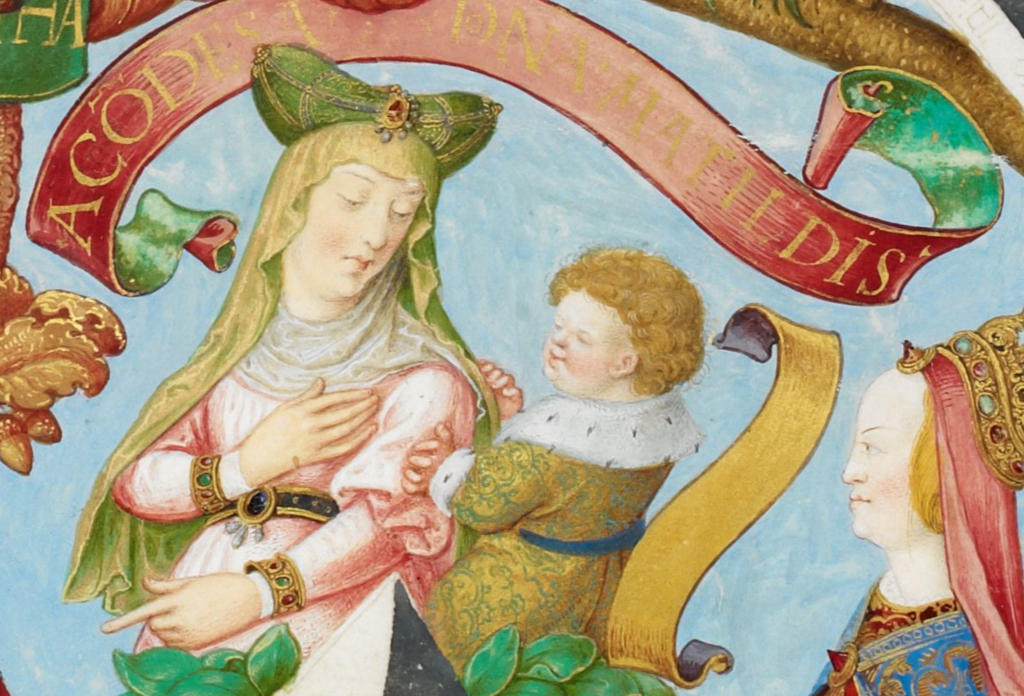Born in 1202 to Ida, Countess of Boulogne, and Renaud, Count of Dammartin, Matilda inherited a noble heritage that traced back to King Stephen of England. From an early age, she was immersed in the world of politics and royalty, preparing her for a future of power and influence.
Matilda's first marriage took place in 1223 when she wed Philippe Hurepel, the Count of Clermont-en-Beauvais. Philippe, a younger son of King Philip II of France, became Matilda's co-ruler of Boulogne, Mortain, Aumale, and Dammartin-en-Goële. However, their union was not without challenges.
After the death of King Louis VIII in 1226, Philippe revolted against his widowed sister-in-law, Blanche of Castile, who held regency for her young son, King Louis IX. This act of rebellion showcased Philippe's ambition and determination to assert his authority. It also reflected Matilda's position as a consort who played a crucial role in supporting her husband's political aspirations.
Tragedy struck when Philippe passed away in 1234, leaving Matilda widowed. Despite the loss, Matilda persevered, assuming sole control and reigning as the independent Countess of Boulogne for three years. Her rule demonstrated her strength and capability as a female leader in a predominantly male-dominated world.
In 1238, Matilda embarked on her second marriage, this time to Infante Afonso, the second in line to the Portuguese throne. Afonso, the younger brother of King Sancho II of Portugal, would later ascend to the throne as King Afonso III of Portugal in 1248. This marriage solidified Matilda's role as Queen of Portugal, granting her a position of influence and authority.
However, their marital bliss would be short-lived. In 1258, Matilda accused Afonso of bigamy following his marriage to Beatrice of Castile. This allegation created a rift between them, leading to papal interdicts imposed by Pope Alexander as a response to their controversial situation. Despite the intervention of the Pope, Matilda and Afonso remained together until Matilda's death, defying the protests of the Church.
One of the significant challenges in Matilda's personal life was her apparent barrenness in her marriage to Afonso. The lack of offspring was considered a grave issue, as producing heirs was of utmost importance for the stability and succession of the monarchy. It is believed that this infertility became a primary reason for their eventual divorce.
As their marriage ended, Matilda faced the heartache of being separated from her husband and barred from joining him in Portugal. She remained in Boulogne, a place where she had left an indelible mark through her rule and influence. Despite the geographical distance, Matilda's impact on Portugal continued through her contributions during her time as queen.
Tragically, Matilda's offspring from her marriages did not leave a lasting legacy. Her daughter, who had married a lord de Châtillon-Montjay, passed away before Matilda, leaving no surviving heirs. Her son, whose motivations for renouncing his rights and seeking refuge in England remain shrouded in mystery, potentially outlived Matilda but did not leave behind any descendants to carry on her lineage.
Upon her death, Matilda's final resting place was likely the Cistercian Abbey of Gomerfontaine, situated in the picturesque commune of Trie-la-Ville in the Oise department of France. This serene abbey provided a fitting setting for the eternal rest of a woman who had played a significant role in the medieval political landscape.
Queen Matilda's life was marked by alliances, challenges, and personal sacrifices. Her marriage to Philippe Hurepel, her reign as an independent countess, and her subsequent union with King Afonso III of Portugal all showcased her strength, resilience, and political acumen. Matilda's impact on Boulogne and Portugal resonates even today, as her legacy endures through the annals of history, leaving behind a rich tapestry of a woman who defied societal norms and left an indelible mark on medieval Europe.



